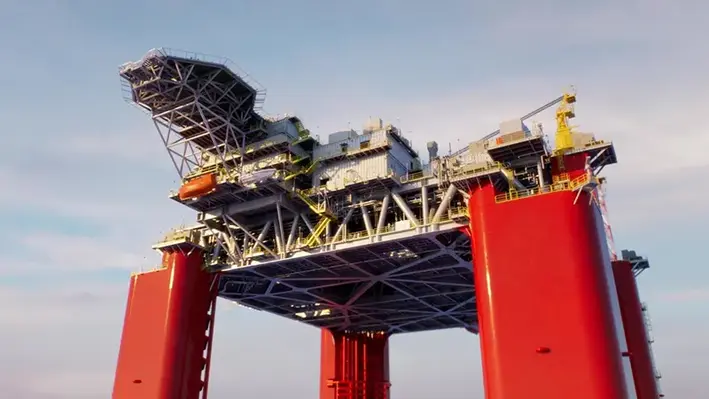
 Another significant deepwater project following the Kaskida floating production unit for bp, Seatrium Limited has now landed a contract from the major for the engineering, procurement, construction and onshore commissioning of the Tiber FPU as well in the Gulf of America.
Another significant deepwater project following the Kaskida floating production unit for bp, Seatrium Limited has now landed a contract from the major for the engineering, procurement, construction and onshore commissioning of the Tiber FPU as well in the Gulf of America.
William Gu, Executive Vice President of Seatrium Energy (International), said, “The Tiber FPU award marks a significant milestone in our relationship with bp and underscores the strength of our series-build approach for the Gulf of America production units. It also highlights Seatrium’s expanding foothold in the FPU segment, delivering exceptional quality and efficiency with uncompromising safety through maximum on-ground completion and single-lift capability. Drawing on lessons learned from our growing portfolio of FPU projects, we will continue to translate experience into execution excellence. Our commitment remains steadfast in supporting bp’s offshore developments.”
The Tiber FPU will have a production capacity of 80,000 barrels of crude oil per day and incorporate advanced technologies to enhance operational efficiency and safety. It will produce from the Tiber and Guadalupe fields in the Keathley Canyon area of the Gulf of America, about 300 miles southwest of New Orleans, in water depths of around 4,100 ft.
The design of the Tiber FPU will largely follow that of Kaskida FPU, backed by Seatrium's well-established expertise in designing from the last project. The company has chosen this strategy to leverage key engineering and commissioning support partners, as well as trusted equipment suppliers, ensuring consistent and streamlined execution to get the ball rolling for the large-scale offshore project.
The topside for the Tiber FPU will be installed onto the hull using Seatrium’s single-lift integration methodology, enabled by its Goliath twin cranes with a combined lifting capacity of 30,000 tonnes. This approach allows the topside to be fully completed and tested at ground level, maximising readiness, safety and efficiency.
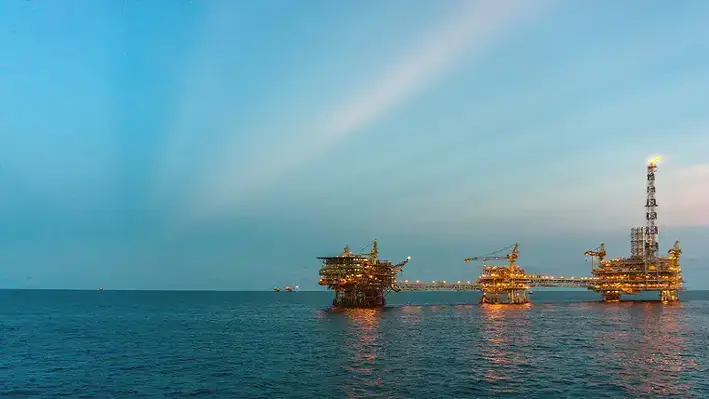
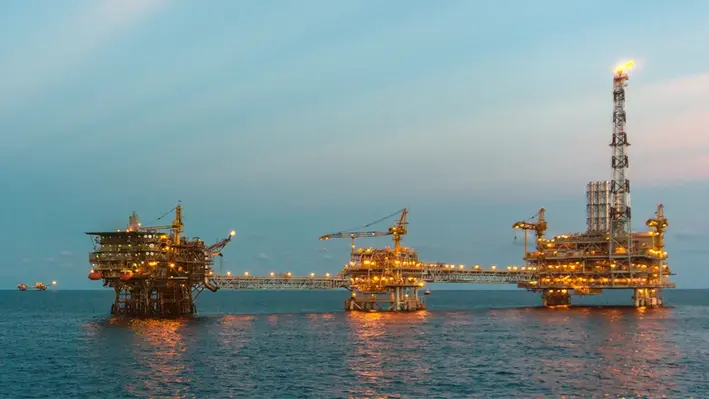 Failure to decommission offshore oil and gas infrastructure on time and in compliance with requirements poses safety, environmental, and financial risks.
Failure to decommission offshore oil and gas infrastructure on time and in compliance with requirements poses safety, environmental, and financial risks.
Failure to maintain offshore oil structures, while leaving them idle and unused can degrade these structures and pose safety risks to employees and regulators visiting the site. Moreover, a lack of maintenance can restrict access to the platform, requiring them to undergo expensive repairs and further contributing to delays in decommissioning operations. Moreover, poorly maintained structures lack appropriate lighting which can behave as a navigational hazard by disrupting ships that are operating in the area.
Delays and noncompliance with decommissioning requirements can give birth to financial risks, particularly to the US government and taxpayers. In most cases, post-bankruptcy decommissioning liabilities in federal waters have been met by co-owners, previous owners, or new owners. However, some instances have had the government having to use taxpayer dollars to pay the costs of cleaning up after delinquent oil companies. When a current leaseholder is unwilling or unable to pay decommissioning costs, federal regulators can, under a system known as 'joint and several liability,' require any or all co-owners or previous lease-holders to pay the decommissioning costs for that infrastructure. For big oil companies with operations in the Gulf of Mexico, these 'contingent liabilities' could amount to two to six times the amount of their direct decommissioning liabilities. Oil companies often do not report these contingent liabilities on their balance sheets.
Some observers have voiced concern and doubt about the strength of federal joint and several liability regulations and the government’s ability to force previous lease-holders to pay decommissioning costs as more offshore oil and gas facilities reach the end of their productive lives.
Stagnant oil and gas infrastructures in the Gulf of Mexico can be vulnerable to deterioration and decay, thereby becoming a source of pollution. This is because detereoration and decay of these structures can lead to oil spills due to a failure of tanks and pipelines. The resulting release of corroded metal into the water can cause chronic pollution. Generally, offshore wells that are either improperly plugged or unplugged are found to become a source of pollution along with leaky or shallow-water wells or abandoned platforms that could be significant sources of greenhouse gas emissions.
While oil spills from idle or unused oil and gas infrastructure are unlikely to discharge high volumes of material, even small amounts of oil are toxic to marine organisms—from plankton to marine mammals—and can cause adverse impacts to their health or their ability to reproduce.
Moreover, deteriorated infrastructures can be prone to hurricanes and other major weather events, which have been increasing in frequency and intensity due to climate change. The Gulf of Mexico is subject to powerful hurricanes that can destroy equipment such as oil storage tanks, move subsea pipelines, or even topple entire platforms.52 Any of these events can trigger oil spills, either directly from the damaged equipment or through impacts to connecting or adjacent facilities.


The Gulf of Mexico (GOM) is a critical region for offshore oil and gas production, with operators increasingly focusing on mature fields to meet energy demands sustainably.
As new field discoveries slow, industry leaders are directing resources towards maximising the efficiency and recovery of existing assets.
According to industry insights, the GOM accounts for a significant portion of global oil production from mature fields, where advanced well intervention techniques are proving instrumental in maintaining output.
With many platforms and wells in the region reaching the latter stages of their operational lives, optimising recovery has become a cost-effective and environmentally sound approach.
Unlike new developments, interventions on mature fields leverage existing infrastructure, minimising both capital expenditure and environmental footprint.
Technological advancements are at the heart of this strategy. Companies like Baker Hughes are introducing tailored solutions such as their Mature Assets Solutions programme, designed to enhance production efficiency while addressing sustainability concerns. Light well intervention technologies are also increasingly deployed in the region, enabling cost-effective maintenance and recovery improvements.
The well intervention market in the Gulf of Mexico is projected to grow steadily as operators shift their focus from exploration to maximising output from existing fields. Industry reports indicate increased spending on well interventions, with the region becoming a hub for innovation in this domain.
Challenges remain, including ageing infrastructure and tightening regulations. However, these also present opportunities for service providers and technology innovators. By addressing these issues proactively, operators in the GOM are positioning the region as a leader in sustainable offshore production.
The focus on mature fields in the GOM reflects a broader trend in the energy sector: achieving a balance between meeting current energy needs and progressing towards a more sustainable future. This approach ensures the Gulf remains a cornerstone of global offshore production while contributing to environmental and economic goals.
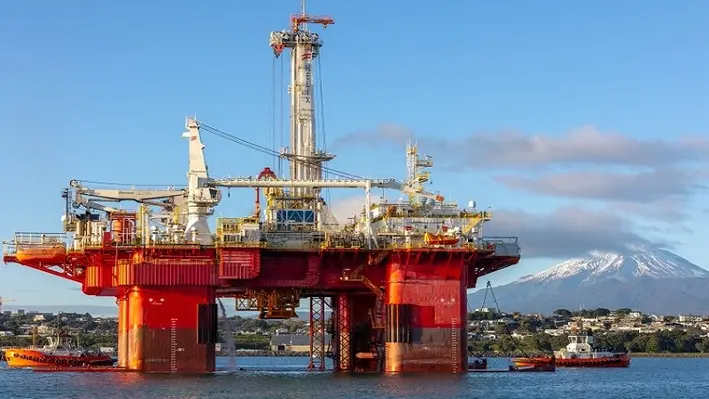
 Helix Energy Solutions Group will continue its work in the Gulf of Mexico this year where it will carry out well intervention services as part of a multi-year contract with Shell Offshore Inc., signed in Q3 2024.
Helix Energy Solutions Group will continue its work in the Gulf of Mexico this year where it will carry out well intervention services as part of a multi-year contract with Shell Offshore Inc., signed in Q3 2024.
In the coming months, and as outlined by the contract, Helix will provide an increased minimum number of days annually with the Q5000 riser-based well intervention vessel, Intervention Riser Systems (IRSs), remotely operated vehicles (ROVs), and project management and engineering services which will cover fully-integrated operations from production enhancement to P&A.
Scotty Sparks, Helix’s Executive Vice President and Chief Operating Officer, said, “We are pleased to announce that Helix has successfully executed a long-term contract with Shell, a valued customer we have safely worked with on numerous projects around the world and with whom we look forward to continuing our excellent relationship. The contract is reflective of improving market conditions and increased demand for Helix’s assets and services, as we continue executing on our strategy by providing best-in-class and global leading well intervention services.”
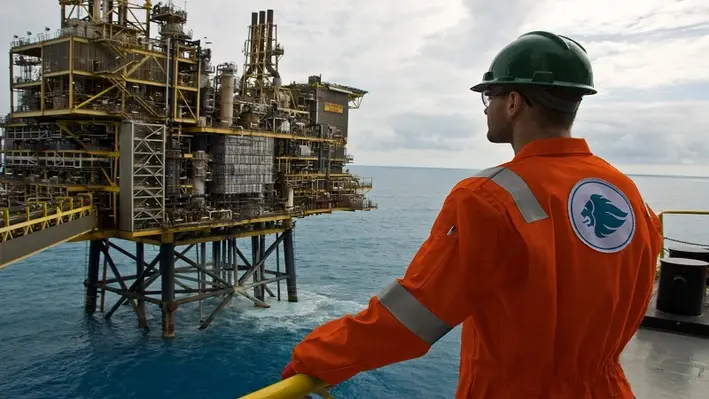
Leading energy provider Expro has renewed and expanded its agreement with Di Drill Survey Services, a provider of high-end HPHT logging and Gyro survey services for complex abandonment services to both the oil and gas and geothermal sectors.
The strategic partnership agreement strengthens the growing relationship between the two energy service companies who are committed to providing premium well integrity solutions to complex wellbore situations.
Patrick Hanson, Expro’s Senior Geothermal Development Manager, said, “Our ability to partner with such a respected and entrenched company such as Di Drill aligns with our geothermal growth strategy to better serve the industry in regions where we don’t have physical locations or an established well intervention footprint. Di Drill shares the same core principals of safety, quality and integrity as Expro, this partnership was an easy decision.”
Daniel McCall, President of Di Drill Survey Services, commented, “We are honoured to have the ability to continue to grow our relationship with such an esteemed service provider in the energy sector. The ability to extend and offer existing services and additional new technologies to our business partners will allow for seamless operations between multiple services from a single provider. Thank you to the Expro team for trusting us to represent your incredible technology.”
A previous agreement enabled Expro to provide its high temperature Kinley Caliper and downhole camera product lines to Di Drill to service predominantly geothermal operations in western US. The new agreement will also include Expro’s annulus intervention solution, Octopoda, with Di Drill making its gyros available for Expro’s specific call-in work. The agreement also extends joint operations into newer regions such as Oregon, Washington, New Mexico, and across the border into Mexico.
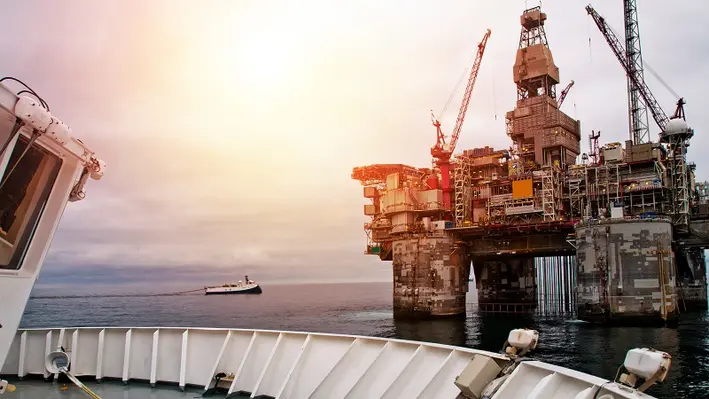
 Energy services provider Expro has completed a well cement placement project for a prominent operator from the US, Gulf of Mexico, delivering an inner-string cementing on a subsea well's 22" surface casing in a water depth of approximately 2,000 m in the Mississippi Canyon area
Energy services provider Expro has completed a well cement placement project for a prominent operator from the US, Gulf of Mexico, delivering an inner-string cementing on a subsea well's 22" surface casing in a water depth of approximately 2,000 m in the Mississippi Canyon area
When integrated with Expro’s other well construction technologies, the company’s innovative Cure technology range, including SeaCure, QuikCure, and CoreCure, offers a comprehensive package for ultimate cement placement and provides a complete 'head-to-shoe' solution.
Expro's Cure technologies allowed the operator to overcome ongoing offset well challenges. These included prolonged wait on cement (WOC) periods when transitioning directly from the jet string to the 22" surface casing, and tasks associated with drilling out a 22" shoetrack.
Jeremy Angelle, Expro’s Vice President of Well Construction, commented, “Our integrated cementing solution helped save approximately 18 hours of cement related drill-out, clean-out, and WOC time when compared to offset wells. By using our Cure technologies, we removed the requirement for a shoetrack to be left in the casing string, helping to avoid previously experienced cement sheath-related challenges. In addition, the QuickCure solution reduced WOC time. This latest project highlights Expro’s commitment to provide solutions that empower our clients to overcome operational challenges and achieve excellent results.”
The Cure technology range was added to Expro’s portfolio of cost-effective, innovative solutions within the company’s well construction product line as part of the Company’s acquisition of DeltaTek in February. The DeltaTek range of low-risk open water cementing solutions help increases clients’ operational efficiency, delivers rig time and cost savings, and improves the quality of cementing operations.


The global offshore well intervention market is set for a period of extended growth in light of stable oil prices forecast in the short-term, maintained oil demand in the medium- and possibly long-term, and ever-increasing environmental pressures.
Globally, spending on well intervention is on the rise with Rystad Energy predicting an increase by almost 20% in 2023 to take the total tally to US$58bn. This is just the start of a forthcoming surge with 17% of wells predicted to go through the intervention process by 2027.
North America accounts for 64% of the total wells ready for intervention by 2027, according to Rystad, giving rise to the dramatic potential of the market in the Gulf of Mexico. According to BSEE, there are approximately 1,885 active production platforms on the OCS with more than 60% older than 25 years.
This is leaving operators grappling with the need to maintain production rates while also dealing with ever-ageing infrastructure, with mounting regulatory pressure increasing the need to address decommissioning obligations. In facing this conundrum, an increasing amount of well intervention activity is highlighting the importance of this service as a means to address both sides.
As new technological innovations become more viable and the understanding around methods such as light well intervention build, the market will only advance in stature, suggesting it will finally meet the potential it has promised for so long, creating a tantalising future for the crowd of service and equipment providers offering their assistance.
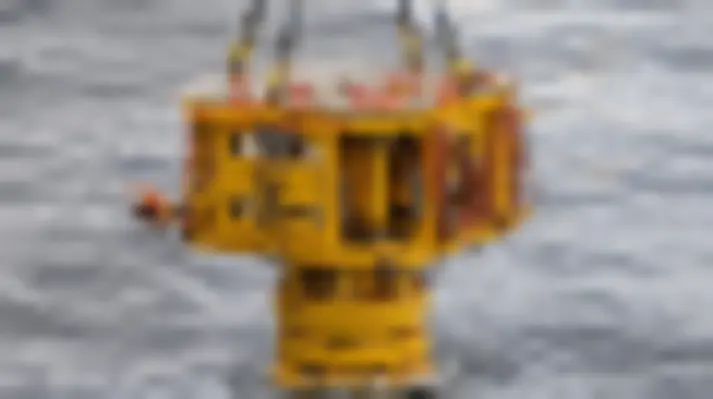

Trendsetter Engineering, a provider of specialised subsea hardware and offshore service solutions from exploration drilling through to abandonment, has announced the recent completion of two deepwater well stimulation campaigns for major operators in the Gulf of Mexico.
The two campaigns resulted in the successful acid treatments of a combined six wells. The campaigns arrived on the heels of a contract agreement to deliver hydraulic intervention and technical services via the Subsea Tree Injection Manifold (STIM) for a Hydrate Remediation and Flowline Flush Project in the Gulf of Mexico.
The Trendsetter STIM offers a 15,000psi rated subsea safety system designed to provide hydraulic well access for both vertical and horizontal tree types. In addition to hydraulic well stimulation, the STIM unit has been used and is capable of supporting various other hydraulic intervention operations including hydrate remediation, bull heading of kill weight fluid and cement as well flowline flushing and testing operations for both pre and decommissioning.
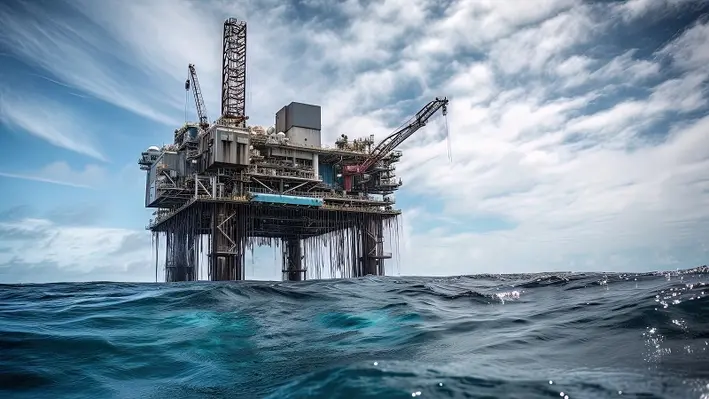

Expro has secured a contract with a major operator for the first deployment of its unique single shear and seal high-debris 15K ball valve assembly.
The multi-functional single shear and seal mechanism will form part of a full subsea deepwater completion/intervention system being designed by Expro for a long-standing and valued customer for a deepwater subsea field at about 6,600 ft in the Gulf of Mexico.
The mechanism is designed to answer the customer’s requirement for a versatile, single-valve subsea solution rather than the conventional double-valve system while offering the reassurance of risk reduction through an additional safety barrier.
Graham Cheyne, Expro’s Vice President of Subsea Well Access, commented, “We are proud to offer our innovative shear and seal solution to meet the needs of this important customer in the Gulf of Mexico. Our cutting-edge technology propels the industry’s momentum towards increased automation, improving safety on the rig floor by minimising personnel and mitigating human error, while providing an additional safety barrier. It offers operators with flexibility for their operations in both in-riser and open water subsea applications.”
Expro’s high-debris single ball system, which delivers shear and post shear seal on a multitude of sizes of coiled tubing, slickline, and electrical cable, is a solution for both gas and liquid. Its versatility makes it suitable for deployment in both in-riser or open water environments.
It is NACE MR0175 compliant and qualified for sour hydrogen sulfide environments. Bi-directional sealing is available even after a pump-through. The mechanism has been qualified to API 17G standard for the performance and design of subsea well intervention equipment. Its ability to handle up to 15% debris is a significant improvement over alternative mechanisms used in this environment today.
Expro’s shear and seal valve is available in the ELSA-HP 15ksi enhanced landing string assembly. It can be configured as a single valve, a single valve with a latch mechanism, or as a conventional subsea test tree arrangement, enabling flexibility. Expro is currently integrating the shear and seal ball system into its ELSA-HD 10ksi equipment and open water offerings.



C-Innovation (C-I), an affiliate of Edison Chouest Offshore (ECO) and its family of companies, has announced the completion of its 46th well intervention in the Gulf of Mexico.
C-I, a leader in providing turnkey intervention services for the global subsea industry, also successfully completed three new riserless zone perforations, an industry first in both deepwater and high-pressure operations. The well intervention programme provides increased efficiency along with faster response times for emergent situations through the quick mobilisation and deployment of a vessel. C-I specialises in downhole operations, including production injection and integrity logging, caliper measurements, and setting water shut-off and zone bypass plugs. With more well intervention operations planned for 2023, C-I has played a pivotal role in increasing output for operators in the Gulf of Mexico.
George Wilson, Riserless Light Well Intervention Project Manager, C-I, said, “We are very proud to be a part of increasing oil production in this challenging geo-political climate. Riserless interventions on vessels offer both time and cost advantages over riser interventions. C-I’s programme offers the added benefit of dedicated dock space with advanced fluid tracking for faster between-well maintenance.”
C-I’s well intervention programme, which made its debut in 2017, has performed 31 hydraulic interventions and 15 mechanical interventions. The mechanical interventions included a total of 85 successful wireline runs, both e-line and slickline. C-I recently completed its longest mechanical intervention on board the vessel, Island Venture. With 79 days offshore, the operation included 22 e-line and slickline runs, as well as 22,205 barrels of fluid pumped into the well.
Wilson added, “C-I is a fully integrated service provider for our clients. Our turnkey solutions for well interventions alleviate the hassle of coordinating and managing the multitude of subcontractors needed to address complex jobs."
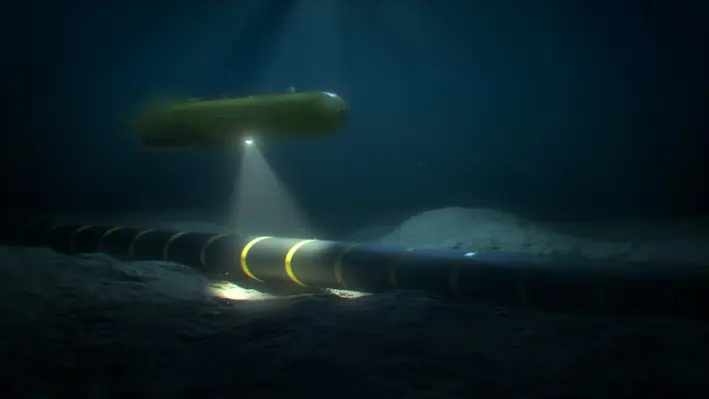

Nauticus Robotics, a developer of autonomous robots using artificial intelligence (AI) for data collection and intervention services, has been awarded a US$2.7mn contract extension with Leidos Holdings.
The extension allows for the continued development of Aquanaut-derivative in preparation for customer adoption decisions and government opportunities expected this year.
The subsea platform is an unmanned underwater vehicle (UAV) with advanced AI and sensing capabilities. It can perform a growing number of jobs without posing a hazard to human divers. The programme has now received US$14.5mn from Leidos since 2022 and the technology is expected to underpin major future opportunities.
Like the Aquanaut, the derivative robot features technology to support security activities and is advancing to complete more challenging missions. The award allows further autonomous behaviour and operational capability enhancements to toolkit, Nauticus’ proprietary software package developed to enable an ecosystem of autonomous actions for subsea vehicles and services as the foundation for this work.
Nicolaus Radford, founder and CEO of Nauticus, commented, "I am very proud of our team's performance resulting in this follow on award, further cementing our partnership with Leidos. This very important work combines great attributes from each company to deploy a truly novel subsea capability."
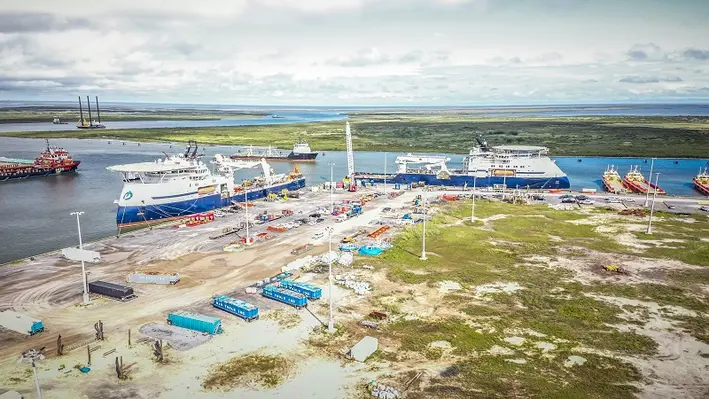
 C-Innovation LLC (C-I), and affiliate of Edison Chouest Offshore (ECO), has expanded into a new facility in Port Fourchon, Louisiana, which will provide an additional dock for subsea inspection maintenance and repair (IMR) and riserless light well intervention (RLWI) services.
C-Innovation LLC (C-I), and affiliate of Edison Chouest Offshore (ECO), has expanded into a new facility in Port Fourchon, Louisiana, which will provide an additional dock for subsea inspection maintenance and repair (IMR) and riserless light well intervention (RLWI) services.
The dedicated docks, along with C-I’s current location, will provide the company’s clients with faster mobilisation, demobilisation and maintenance times, equating to cost savings.
The secondary location will offer vessel loading, project system integration testing (SIT), and mobilisation and demobilisation services for the subsea market. Delivering C-I’s premier customer service, the facility provides 24/7 operations, dedicated dispatcher support, a weekday manager, and client offices with conference rooms to be constructed later in the year.
JeanPaul Guidry, Shorebase Operations Manager, C-Innovations, said, “The new facility serves as a hub for executing all of our subsea projects. As C-I’s projects move from the initiation and planning phases, our shorebase operation facilities provide an efficient workflow as we move projects into mobilisation and execution.”
For IMR work, C-I provides both short and long-term storage for project equipment, and can move into SIT prior to mobilisation. For RLWI services, equipment and fluid can be staged prior to each mobilisation or between well maintenance (BWM). SIT and preventative maintenance can be completed at the new facility before the vessel is ready to start a well campaign.
Guidry commented, “Our customers trust C-Innovation with providing a turnkey project execution solution. Having facilities dedicated to project execution creates a unique offering within the subsea service provider marketplace, and helps strengthen the trust our clients have in C-Innovation.”
Page 1 of 5